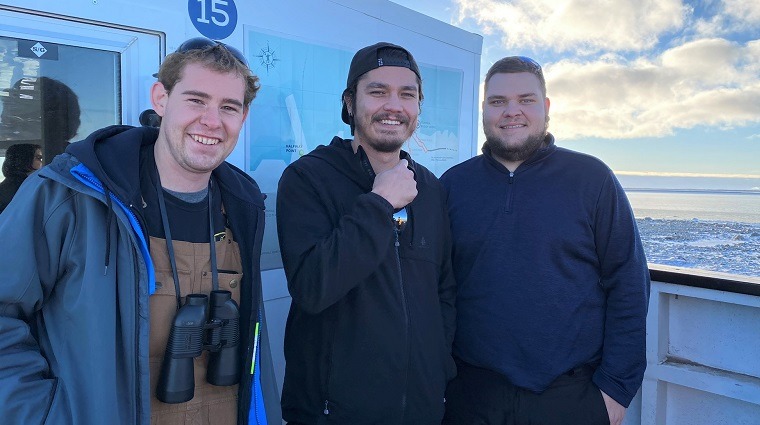
Saskatchewan Polytechnic entered new waters when it launched its first Polar Bear Eco Trip. Visiting Churchill, Manitoba on the shore of Hudson Bay, two guides took a group of students, employees and the public on a one-week learning adventure. The trip was the first of its kind for the institution—a collaborative foray into sustainability-focussed life-long learning, starting with Surge Micro-credential lectures and culminating in a bucket-list sub-Artic experience to see one of the largest concentrations of polar bears on the planet.
For three Sask Polytech students the trip was a chance to take their learning outside their respective programs to experience something not many people see in a lifetime. Viewing polar bears in the wild was a definite draw, but for each student the trip held the promise of more than just a site-seeing tour of the north.
Two of the students, Cole Walker and Andrew Kuras, applied to their programs in the School of Natural Resources and Built Environment for spots on the eco trip, submitting short essays on what sustainability means to them and why they should be chosen. Their effort, along with recommendations from their instructors, gained them spots on what was soon to be a waitlisted tour. “We were excited to be able to send Cole and Andrew,” says Scott Lipsit, program head for Natural Resource Technologies. “A trip like this is an opportunity unlike any we’ve ever been able to offer our students.” Zachary Reimer didn’t apply for a funded spot but decided to sign up for the trip on his own. A classmate to Walker, he says he realized it was too good an opportunity to pass up and this might be his only chance to travel as far north as Churchill on a guided adventure.
Walker and Reimer, who are both in their second year of the Integrated Resource Management (IRM) diploma program, share a background in carpentry. Both students had a strong desire to work in a career that would take them outdoors and chose to return to the classroom after a few years of work in the trade. Walker, who has Stellat’en First Nation roots and undertook his Red Seal carpentry apprenticeship training through Sask Polytech, has always been interested in the natural world. “I enjoyed carpentry but was looking for a change,” he says, “and the IRM program appealed to me because it leads to jobs that have lots of field time.” So far, this has held true for Walker, who spent the summer after his first year in the two-year IRM program working as a research technician with the Saskatchewan Ministry of Fisheries in and around Prince Albert National Park.
Following a similar path, Reimer, who hails from Gravelbourg, completed the two-year Carpentry certificate program at Sask Polytech and worked in the trade for a couple of seasons before returning to Sask Polytech to pursue further education. IRM also appealed to his interest in the outdoors and wildlife, and he liked the diversity of career options it offers. Reimer spent his first summer in the program working for the Saskatchewan Public Safety Agency on a fuel mitigation project, assessing forested areas around communities to identify possible sources of wildfire.
The third Sask Polytech student on the trip, Andrew Kuras, is a Resource and Environmental Law (REL) student, also in his second year of his program. His desire to join the Churchill trip was two-fold. Seeing polar bears would be a bonus, but he saw the trip as a chance to compare his experiences over the past summer working as a conservation officer (CO) in Good Spirit Provincial Park with what COs face in a vastly different wilderness. The Invermay-born student worked in heavy machinery for a few years prior to attending Sask Polytech but always wanted to be a conservation officer. “I was pulled over at a conservation check-stop a few summers ago and told the CO that I was interested in his job. He offered me the chance to do a ride-along and I applied to the REL program a few weeks later.”
Nearly a year to the date of his application, Kuras got to work the same check-stop as a REL summer student. Through his classes and summer work, he has learned that the day-to-day duties of a conservation officer can vary a lot depending on where they are located. “I imagine work in a northern community would be pretty different from what I had a chance to do over the summer,” Kuras says. “Churchill is more remote, and the kind of wildlife calls they get would be quite different. A lot of the principles we’ve learned in my program would apply, but you’d face unique challenges working in that environment.”
The three students joined the diverse group of trip participants over Zoom for three pre-trip lectures. All three students then drove from Prince Albert to Saskatoon to board the Sask Polytech NRBE vans that would take the group from Saskatoon to The Pas to board the train to Churchill. “I’ve travelled a lot so the train aspect interested me,” says Walker. “I like the idea of seeing different geography and terrain, especially because the environment is changing. I visited Salmon Glacier near Hyder, Alaska a few years ago and it resonated with me that we might not be able to see it fifty or a hundred years from now. This trip has that same appeal.”
Once in Churchill, the students settled into the Churchill Northern Studies Centre (CNSC) where the group would stay for three days. “The research centre was super cool,” says Walker, who is interested in exploring his academic options after completing his IRM diploma. “I might want to bridge to a degree or explore applied research opportunities,” he says. “One of our instructors, Rebecca Perry, has been encouraging me to look at what I want to do next. It was interesting to see all the research activities going on at the centre, and people living there and carrying out projects.”
The students enthusiastically explored the area on the group’s first day in Churchill under the safe guidance of the tour’s two guides, Melanie Elliott and Greg Fenty. Though the temperature was frigid, Reimer particularly enjoyed the incongruity of the beach at historic Fort Churchill. “It was so windy and crappy and fun to see when it was cold and miserable.” The group rode a CNSC bus to see various sites in the area, and Elliott and Fenty pointed out geographic features and historic landmarks and referenced information they’d introduced in the pre-trip lectures. “It’s such a fascinating place with so much to see and learn about,” says Elliott. “That’s partly what keeps me coming back.” Fenty kept a keen eye out for roaming polar bears. The goal on any polar bear trip, the students learned, is not to see a polar bear unless you’re safely aboard a Tundra Buggy ®.
On Tundra Buggy® day the group spent sunup to sundown aboard a large vehicle especially designed for arctic wildlife viewing. “We saw so many bears!” says Kuras, who is looking forward to getting the pictures he took printed on canvas. “It was even better than I thought it would be. I wasn’t sure what to expect, but by lunch we had trouble keeping track of how many we saw.” For both Kuras and Reimer, seeing a couple of arctic foxes was nearly as exciting as seeing the bears. “I love foxes,” says Reimer “and the arctic foxes were incredibly cute. They are cat sized and we enjoyed watching them pounce on prey under the snow.”
“Seeing this much wildlife was incredible,” agrees Walker. “The goal of the trip was to have a bit of interaction and witness wildlife in their natural state. The cherry on top for me was the bears.” Walker speaks to how viewing polar bears in the wild after learning about the environmental challenges they face resonated with him and made him think about his own environmental footprint. “You can watch as many documentaries as you want but it doesn’t bring it home in the same way.” “It was a super cool opportunity.” Kuras agrees. “We’ve talked in class a bit about how environmental factors affect wildlife. The north is a perfect place to observe and learn about that.”
Kuras met his goal of finding out more about the life of a remote northern CO on the group’s third day in Churchill. Fenty, who is familiar with the town, figured out the new location of the regional office for Manitoba Environment, Climate and Parks and Kuras was lucky to find a CO pulling up to the office as they arrived. Chantal Maclean agreed to sit down with Kuras for a chat. “I really wanted to learn about some of the specific challenges faced in wildlife in another area,” explains Kuras. “It was eye opening to hear first-hand what the work is like there. Even though Saskatchewan and Manitoba are right next to each other, the opportunities and challenges each province presents for COs are vastly different. I’m so glad that I had a chance to meet and talk with someone in conservation law.”
Walker says that the trip’s learnings went beyond what you expect on a typical holiday. “It felt like a push in a good way to have educational itinerary,” he says. It was a break from coursework but I felt like I was learning along the way. The lectures before and during the trip were beneficial. All the learning was good.” Reimer especially enjoyed the lecture at the CNSC with researcher Douglas Clark. “It was super interesting hearing about the research into what the population numbers are doing and what factors influence that. It added to the trip to hear this information from someone studying polar bears.”
The long journey back to Saskatoon and then Prince Albert gave the students a chance to relax and reflect on their experience and what would come next for each of them. After his first year in the REL program Kuras applied for jobs in Alberta, Manitoba and Saskatchewan and got offers in all three provinces. His goal when he finishes the program this spring is to find a permanent, year-round CO job in the Yorkton area.
Reimer’s career goals are more fluid, and he will likely take the opportunity to try a few jobs in different resource management areas. Ultimately, he sees himself in environmental consulting, but says he’ll decide later what area he wants to focus on.
Walker’s interest in the north has clearly been piqued. “If there was a work term for the experience to move up north for six to eight months, I might just take it,” he says. “Churchill was a total 360 from everything we’ve learned down south. I’d really like to come back.”
The Sask Polytech Polar Bear Eco Trip was a collaboration between Sask Polytech’s Office of Applied Research and Innovation and School of Natural Resources and Built Environment. Read more about how it came about and how the trip’s sustainability and life-long learning focus speaks to Sask Polytech’s commitments to the United Nations (UN) Sustainable Development Goals (SDGs) in the first in our three-part series. The whole group’s time in Churchill is detailed in part two.
For more information about Sask Polytech’s Polar Bear Eco Trip, visit our website: Polar Bear Eco Trip.
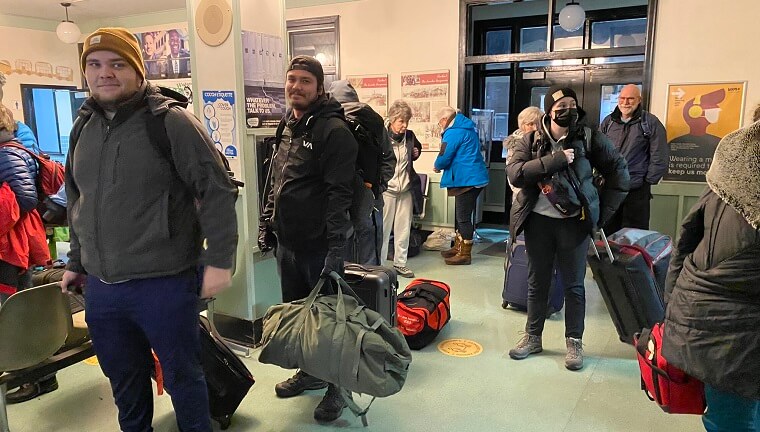
Sask Polytech students Andrew Kuras and Cole Walker prepare to board the train to Churchill, Manitoba.
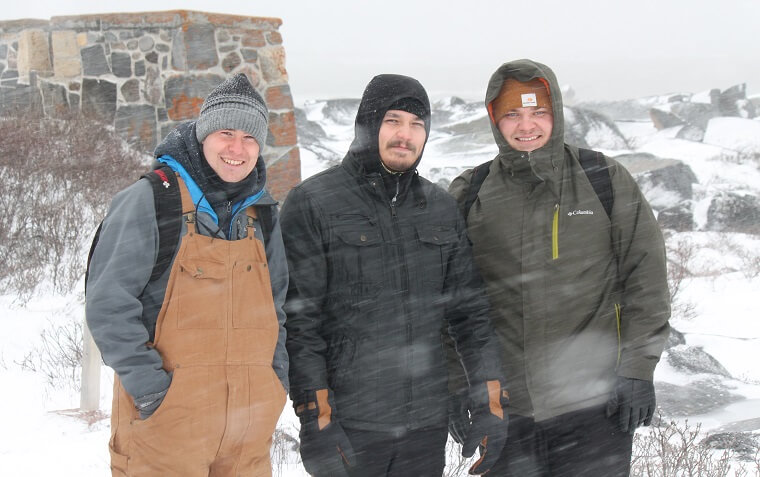
Three Natural Resource Technologies students joined the group of 22 adventurers on Sask Polytech's first Polar Bear Eco Trip.
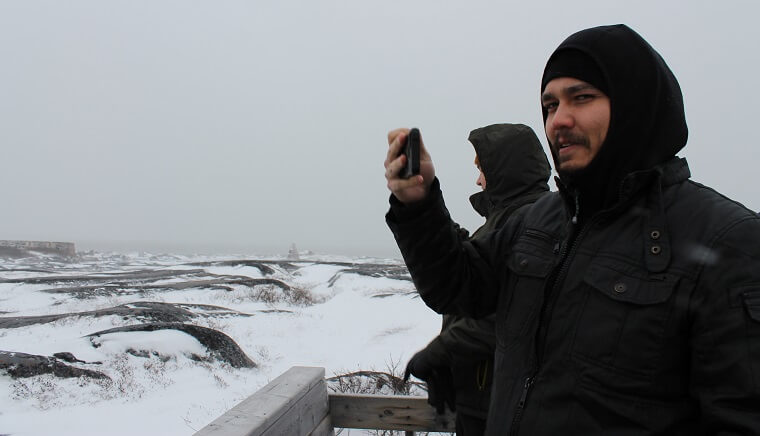
Day one in Churchill was spent visiting historic sites and the blustery coastline of Hudson Bay.
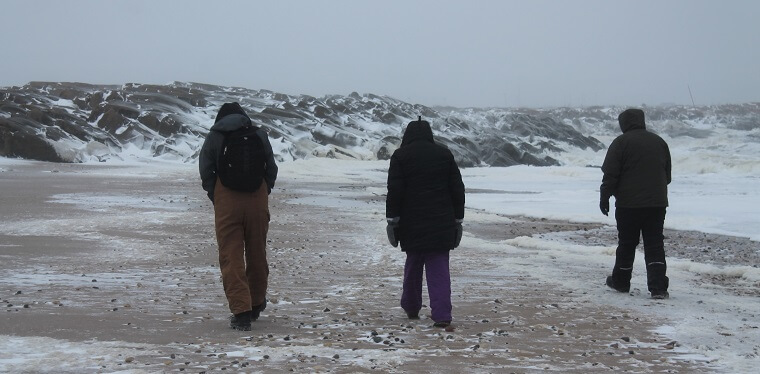
The beach at Cape Merry was frozen and desolate. Everyone braved the cold and enjoyed dipping a boot into the bay.
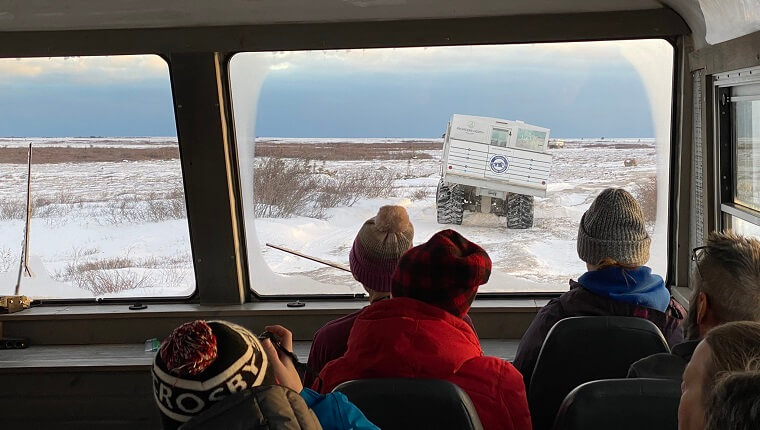
Tundra Buggy® wildlife viewing day was much anticipated by everyone on the tour.
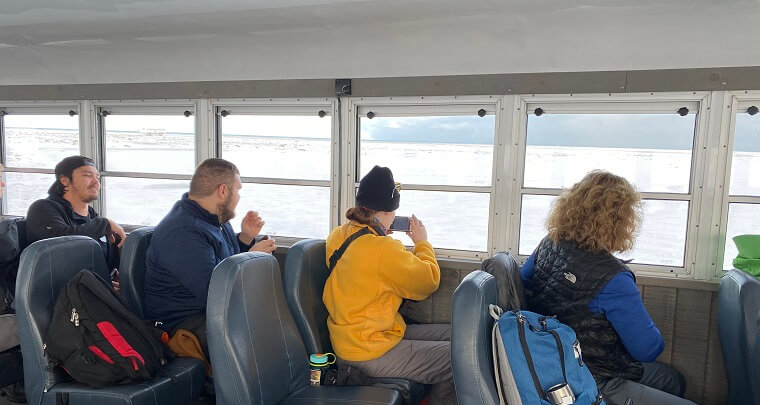
The students were eager to spot their first polar bear from the large vehicle designed for the rough tundra permafrost and alpha predators who roam there.
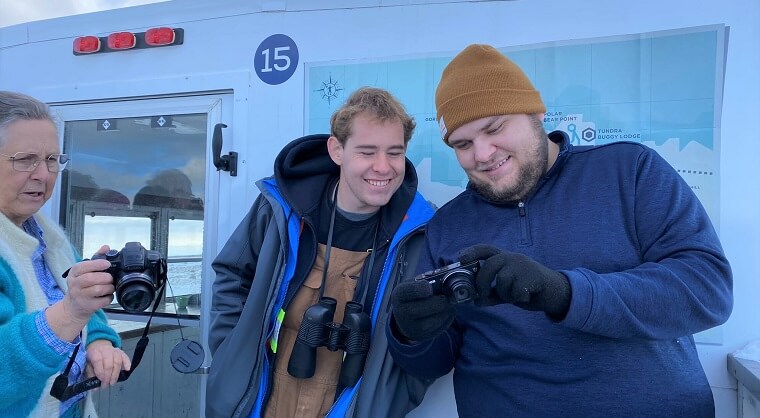
Capturing wildlife on camera was a goal for many participants. Student Andrew Kuras looks forward to printing some of the amazing images he took of polar bears and foxes.
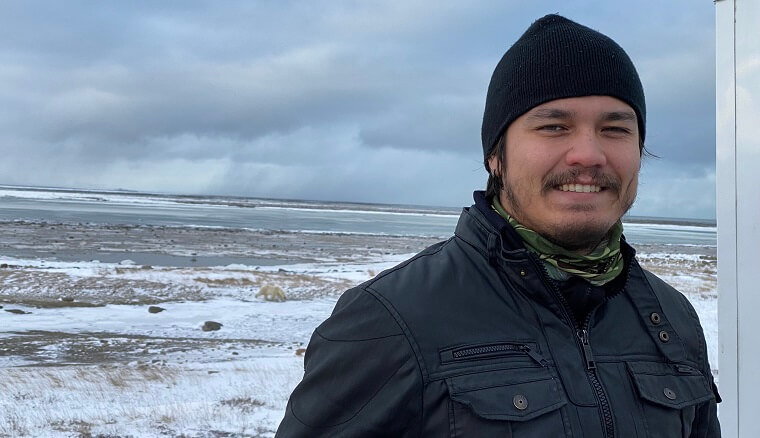
Student Cole Walker posing from the Tundra Buggy® deck with a polar bear behind.
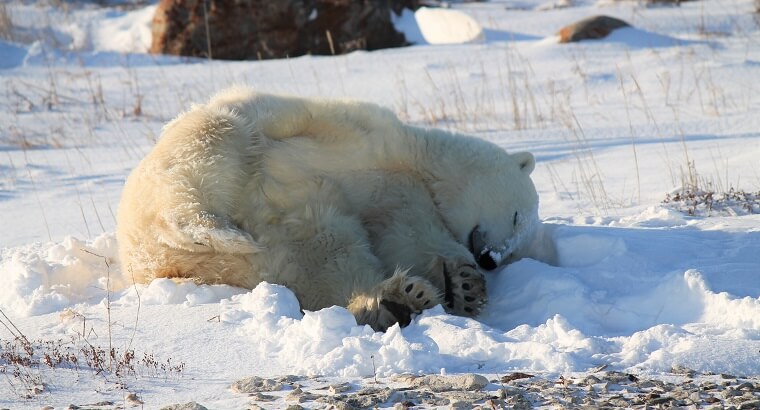
Seeing polar bears in their natural habitat was a thrill for everyone on the trip.
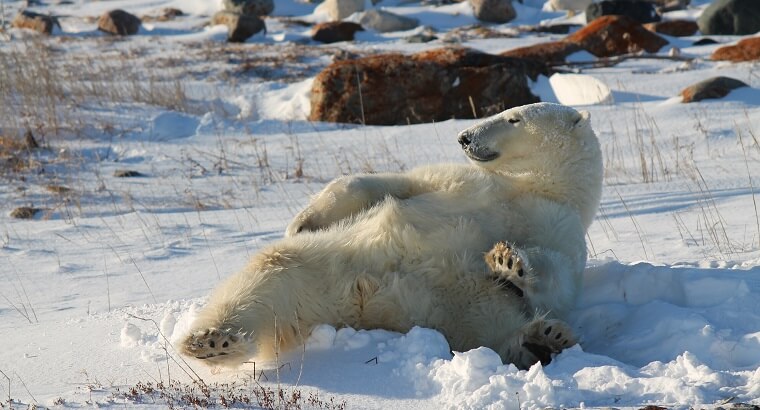
Pre-trip lectures helped participants learn about polar bears and their environment, including how to differentiate between males and females. This young male with his characeristically broad neck shows off the roman nose typical of all polar bears.
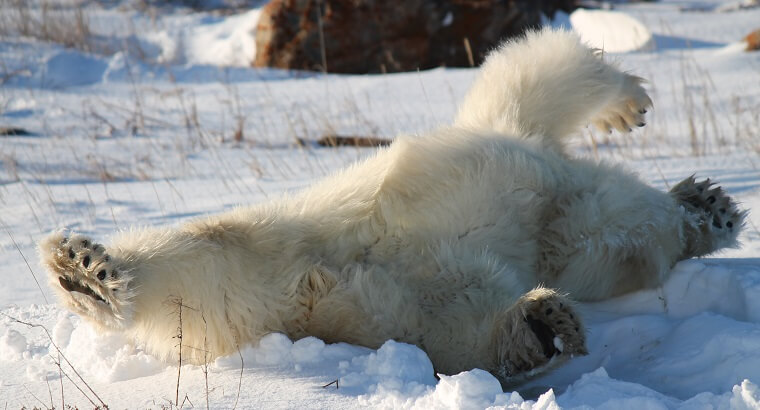
The students were amazed to see the bears up close doing what bears do while awaiting sea-ice freeze-up.
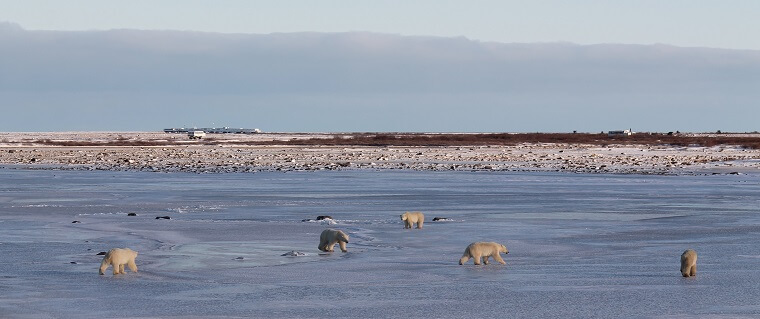
The group was fortunate to see twenty bears during their sunup to sundown trip aboard the Tundra Buggy®. A group of five bears is a rare citing.
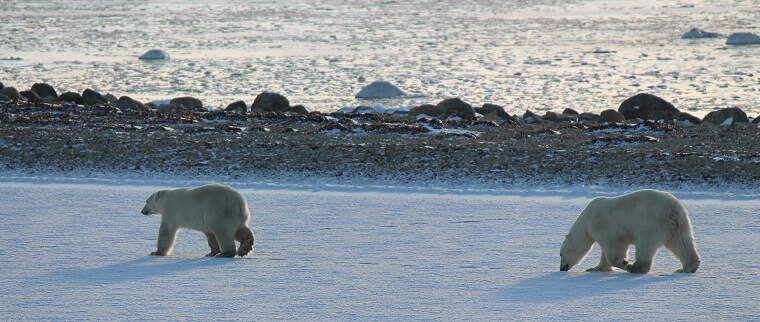
Participants witnessed an infrequent sunny day, which meant the bears were particularly active.
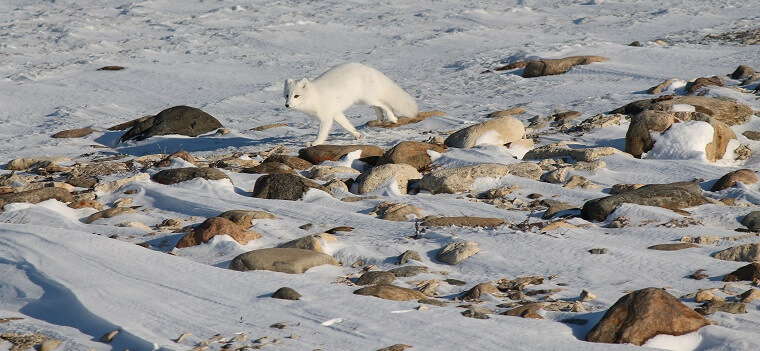
Students Andrew Kuras and Zachary Reimer were as exicted to spot an arctic fox as they were to see polar bears.
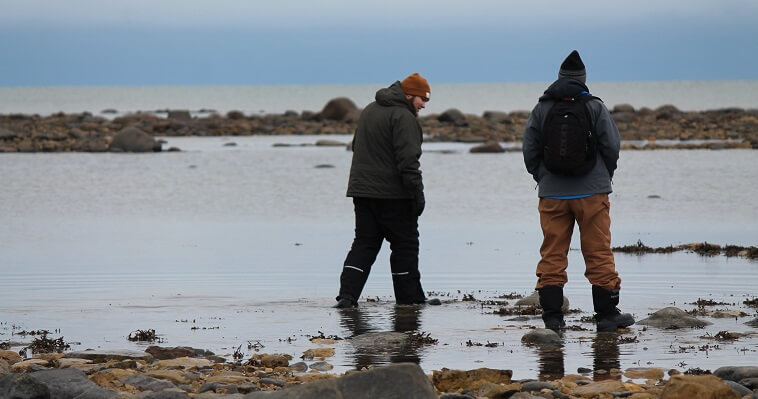
On day three the group explored the coastline before heading back to the town of Churchill.
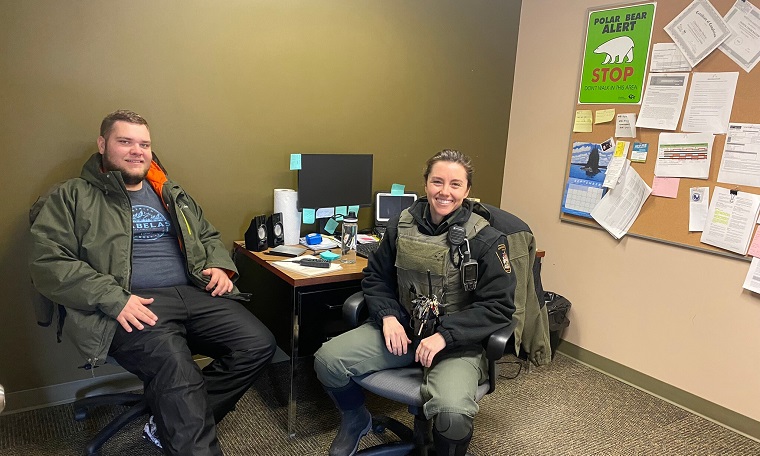
Back in the town of Churchill, student Andrew Kuras, who is studying resource and environmental law, had a chance to meet with a local conservation officer.
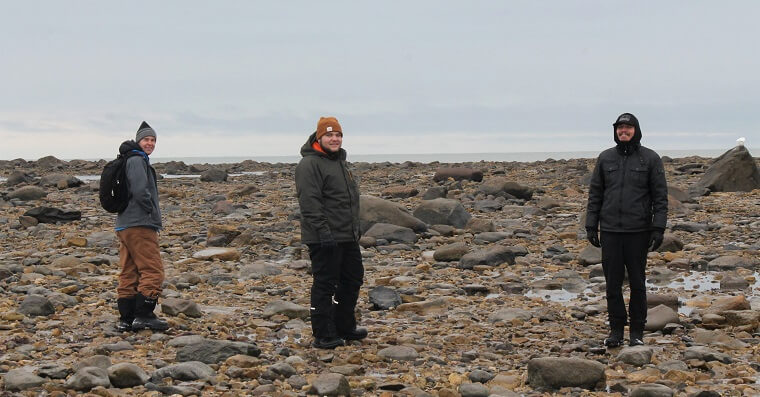
All three Sask Polytech students will take home memories from their shared experience, and different learnings to consider as they continue their programs and start their careers in resource management and conservation.
Saskatchewan Polytechnic is signatory to the SDG Accord. Sustainable Development Goal alignment is one of the ways Sask Polytech is leading the rise of polytechnic education.


